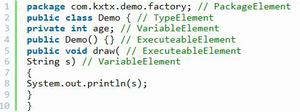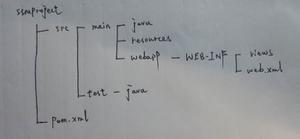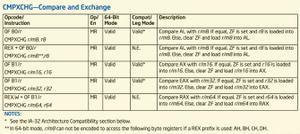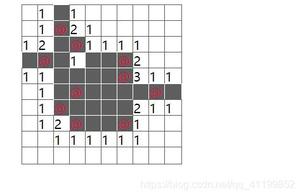ObjectUtils.java

import lombok.extern.slf4j.Slf4j;
import com.donkeycode.core.io.FastByteArrayOutputStream;
import java.io.ByteArrayInputStream;
import java.io.ObjectInputStream;
import java.io.ObjectOutputStream;
import java.lang.reflect.Array;
import java.lang.reflect.InvocationTargetException;
import java.util.*;
import org.springframework.cglib.beans.BeanCopier;
/**
* 对象操作工具类
*
* @author nanfeng
* @date 2019年12月10日
* @since 0.0.1
*/
@Slf4j
public class ObjectUtils {
/**
* 比较两个对象是否相等。<br>
* 相同的条件有两个,满足其一即可:<br>
* <code>
* 1. obj1 == null && obj2 == null;
* 2. obj1.equals(obj2)
* </code>
*
* @param obj1
* 对象1
* @param obj2
* 对象2
* @return 是否相等
*/
public static boolean equals(Object obj1, Object obj2) {
return Objects.equals(obj1, obj2);
}
/**
* <p>计算对象长度,如果是字符串调用其length函数,集合类调用其size函数,数组调用其length属性,其他可遍历对象遍历计算长度</p>
*
* @param obj
* 被计算长度的对象
* @return 长度
*/
public static int length(Object obj) {
if (obj == null) {
return 0;
}
if (obj instanceof CharSequence) {
return ((CharSequence) obj).length();
}
if (obj instanceof Collection) {
return ((Collection<?>) obj).size();
}
if (obj instanceof Map) {
return ((Map<?, ?>) obj).size();
}
int count;
if (obj instanceof Iterator) {
Iterator<?> iter = (Iterator<?>) obj;
count = 0;
while (iter.hasNext()) {
count++;
iter.next();
}
return count;
}
if (obj instanceof Enumeration) {
Enumeration<?> enumeration = (Enumeration<?>) obj;
count = 0;
while (enumeration.hasMoreElements()) {
count++;
enumeration.nextElement();
}
return count;
}
if (obj.getClass().isArray() == true) {
return Array.getLength(obj);
}
return -1;
}
/**
* 对象中是否包含元素
*
* @param obj
* 对象
* @param element
* 元素
* @return 是否包含
*/
public static boolean contains(Object obj, Object element) {
if (obj == null) {
return false;
}
if (obj instanceof String) {
if (element == null) {
return false;
}
return ((String) obj).contains(element.toString());
}
if (obj instanceof Collection) {
return ((Collection<?>) obj).contains(element);
}
if (obj instanceof Map) {
return ((Map<?, ?>) obj).values().contains(element);
}
if (obj instanceof Iterator) {
Iterator<?> iter = (Iterator<?>) obj;
while (iter.hasNext()) {
Object o = iter.next();
if (equals(o, element)) {
return true;
}
}
return false;
}
if (obj instanceof Enumeration) {
Enumeration<?> enumeration = (Enumeration<?>) obj;
while (enumeration.hasMoreElements()) {
Object o = enumeration.nextElement();
if (equals(o, element)) {
return true;
}
}
return false;
}
if (obj.getClass().isArray() == true) {
int len = Array.getLength(obj);
for (int i = 0; i < len; i++) {
Object o = Array.get(obj, i);
if (equals(o, element)) {
return true;
}
}
}
return false;
}
/**
* 检查对象是否为null
*
* @param obj
* 对象
* @return 是否为null
*/
public static boolean isNull(Object obj) {
return Objects.isNull(obj);
}
/**
* 检查对象是否不为null
*
* @param obj
* 对象
* @return 是否为null
*/
public static boolean isNotNull(Object obj) {
return !isNull(obj);
}
/**
* 克隆对象<br>
* <p> 对象必须实现Serializable接口</p>
*
* @param obj
* @return
*/
@SuppressWarnings("unchecked")
public static <T> T clone(T obj) {
final FastByteArrayOutputStream byteOut = new FastByteArrayOutputStream();
try (ObjectOutputStream out = new ObjectOutputStream(byteOut)) {
out.writeObject(obj);
out.flush();
final ObjectInputStream in = new ObjectInputStream(new ByteArrayInputStream(byteOut.toByteArray()));
return (T) in.readObject();
} catch (Exception e) {
log.error(e.getMessage(), e);
throw new RuntimeException(e);
}
}
/**
* 序列化<br>
* 对象必须实现Serializable接口
*
* @param <T>
* @param t
* 要被序列化的对象
* @return 序列化后的字节码
*/
public static <T> byte[] serialize(T t) {
FastByteArrayOutputStream byteOut = new FastByteArrayOutputStream();
try (ObjectOutputStream oos = new ObjectOutputStream(byteOut)) {
oos.writeObject(t);
oos.flush();
} catch (Exception e) {
log.error(e.getMessage(), e);
throw new RuntimeException(e);
}
return byteOut.toByteArray();
}
/**
* 反序列化<br>
* 对象必须实现Serializable接口
*
* @param <T>
* @param bytes
* 反序列化的字节码
* @return 反序列化后的对象
*/
@SuppressWarnings("unchecked")
public static <T> T unserialize(byte[] bytes) {
try (ByteArrayInputStream bais = new ByteArrayInputStream(bytes); ObjectInputStream ois = new ObjectInputStream(bais)) {
return (T) ois.readObject();
} catch (Exception e) {
log.error(e.getMessage(), e);
throw new RuntimeException(e);
}
}
/**
* 检查是否为有效的数字<br>
* 检查Double和Float是否为无限大,或者Not a Number<br>
* 非数字类型和Null将返回true
*
* @param obj
* 被检查类型
* @return 检查结果,非数字类型和Null将返回true
*/
public static boolean isValidIfNumber(Object obj) {
if (obj != null && obj instanceof Number) {
if (obj instanceof Double) {
if (((Double) obj).isInfinite() || ((Double) obj).isNaN()) {
return false;
}
} else if (obj instanceof Float) {
if (((Float) obj).isInfinite() || ((Float) obj).isNaN()) {
return false;
}
}
}
return true;
}
/**
* 将List中的对象拷贝到目标对象的List中(标准Bean)
*
* @param sourceList
* 源List
* @param targetCls
* 目标对象类型
* @param <T>
* 源类型
* @param <R>
* 目标类型
* @return 目标类型List数组
*/
public static <T, R> List<R> beanCopyPropertiesForList(List<T> sourceList, Class<R> targetCls) {
List<R> targetList = new ArrayList<R>();
if (sourceList != null && !sourceList.isEmpty()) {
for (T source : sourceList) {
targetList.add(beanCopyProperties(source, targetCls));
}
}
return targetList;
}
/**
* 属性值拷贝(标准Bean)
*
* @param source
* 源对象
* @param targetCls
* 目标对象类
* @return 拷贝目标类的实体
*/
public static <R> R beanCopyProperties(Object source, Class<R> targetCls) {
try {
R target = targetCls.getDeclaredConstructor().newInstance();
BeanCopier copier = BeanCopier.create(source.getClass(), targetCls, false);
if (source != null) {
copier.copy(source, target, null);
}
return target;
} catch (InstantiationException e) {
log.error(e.getMessage(), e);
throw new RuntimeException("Instantiation target error.");
} catch (IllegalAccessException e) {
log.error(e.getMessage(), e);
throw new RuntimeException("Target Illegal Access error.");
} catch (InvocationTargetException e) {
log.error(e.getMessage(), e);
throw new RuntimeException("Invocation Target error.");
} catch (NoSuchMethodException e) {
log.error(e.getMessage(), e);
throw new RuntimeException("Target class No Such Method error.");
}
}
}
import java.io.IOException;import java.io.OutputStream;
import java.io.UnsupportedEncodingException;
import java.nio.charset.Charset;
/**
* 基于快速缓冲FastByteBuffer的OutputStream,随着数据的增长自动扩充缓冲区
* <p>
* 可以通过{@link #toByteArray()}和 {@link #toString()}来获取数据
* <p>
* {@link #close()}方法无任何效果,当流被关闭后不会抛出IOException
* <p>
* 这种设计避免重新分配内存块而是分配新增的缓冲区,缓冲区不会被GC,数据也不会被拷贝到其他缓冲区。
*
* @author biezhi
*/
public class FastByteArrayOutputStream extends OutputStream {
private final FastByteBuffer buffer;
public FastByteArrayOutputStream() {
this(1024);
}
public FastByteArrayOutputStream(int size) {
buffer = new FastByteBuffer(size);
}
@Override
public void write(byte[] b, int off, int len) {
buffer.append(b, off, len);
}
@Override
public void write(int b) {
buffer.append((byte) b);
}
public int size() {
return buffer.size();
}
/**
* 此方法无任何效果,当流被关闭后不会抛出IOException
*/
@Override
public void close() {
// nop
}
public void reset() {
buffer.reset();
}
public void writeTo(OutputStream out) throws IOException {
int index = buffer.index();
for (int i = 0; i < index; i++) {
byte[] buf = buffer.array(i);
out.write(buf);
}
out.write(buffer.array(index), 0, buffer.offset());
}
public byte[] toByteArray() {
return buffer.toArray();
}
@Override
public String toString() {
return new String(toByteArray());
}
public String toString(String enc) throws UnsupportedEncodingException {
return new String(toByteArray(), enc);
}
public String toString(Charset charset) {
return new String(toByteArray(), charset);
}
}
/** * 代码移植自<a href="https://github.com/biezhi/blade">blade</a><br>
* 快速缓冲,将数据存放在缓冲集中,取代以往的单一数组
*
* @author yanjun.xue
* @since 1.0
*/
public class FastByteBuffer {
/**
* 缓冲集
*/
private byte[][] buffers = new byte[16][];
/**
* 缓冲数
*/
private int buffersCount;
/**
* 当前缓冲索引
*/
private int currentBufferIndex = -1;
/**
* 当前缓冲
*/
private byte[] currentBuffer;
/**
* 当前缓冲偏移量
*/
private int offset;
/**
* 缓冲字节数
*/
private int size;
/**
* 一个缓冲区的最小字节数
*/
private final int minChunkLen;
public FastByteBuffer() {
this.minChunkLen = 1024;
}
public FastByteBuffer(int size) {
this.minChunkLen = Math.abs(size);
}
/**
* 分配下一个缓冲区,不会小于1024
*
* @param newSize
* 理想缓冲区字节数
*/
private void needNewBuffer(int newSize) {
int delta = newSize - size;
int newBufferSize = Math.max(minChunkLen, delta);
currentBufferIndex++;
currentBuffer = new byte[newBufferSize];
offset = 0;
// add buffer
if (currentBufferIndex >= buffers.length) {
int newLen = buffers.length << 1;
byte[][] newBuffers = new byte[newLen][];
System.arraycopy(buffers, 0, newBuffers, 0, buffers.length);
buffers = newBuffers;
}
buffers[currentBufferIndex] = currentBuffer;
buffersCount++;
}
/**
* 向快速缓冲加入数据
*
* @param array
* 数据
* @param off
* 偏移量
* @param len
* 字节数
* @return 快速缓冲自身 @see FastByteBuffer
*/
public FastByteBuffer append(byte[] array, int off, int len) {
int end = off + len;
if ((off < 0) || (len < 0) || (end > array.length)) {
throw new IndexOutOfBoundsException();
}
if (len == 0) {
return this;
}
int newSize = size + len;
int remaining = len;
if (currentBuffer != null) {
// first try to fill current buffer
int part = Math.min(remaining, currentBuffer.length - offset);
System.arraycopy(array, end - remaining, currentBuffer, offset, part);
remaining -= part;
offset += part;
size += part;
}
if (remaining > 0) {
// still some data left
// ask for new buffer
needNewBuffer(newSize);
// then copy remaining
// but this time we are sure that it will fit
int part = Math.min(remaining, currentBuffer.length - offset);
System.arraycopy(array, end - remaining, currentBuffer, offset, part);
offset += part;
size += part;
}
return this;
}
/**
* 向快速缓冲加入数据
*
* @param array
* 数据
* @return 快速缓冲自身 @see FastByteBuffer
*/
public FastByteBuffer append(byte[] array) {
return append(array, 0, array.length);
}
/**
* 向快速缓冲加入一个字节
*
* @param element
* 一个字节的数据
* @return 快速缓冲自身 @see FastByteBuffer
*/
public FastByteBuffer append(byte element) {
if ((currentBuffer == null) || (offset == currentBuffer.length)) {
needNewBuffer(size + 1);
}
currentBuffer[offset] = element;
offset++;
size++;
return this;
}
/**
* 将另一个快速缓冲加入到自身
*
* @param buff
* 快速缓冲
* @return 快速缓冲自身 @see FastByteBuffer
*/
public FastByteBuffer append(FastByteBuffer buff) {
if (buff.size == 0) {
return this;
}
for (int i = 0; i < buff.currentBufferIndex; i++) {
append(buff.buffers[i]);
}
append(buff.currentBuffer, 0, buff.offset);
return this;
}
public int size() {
return size;
}
public boolean isEmpty() {
return size == 0;
}
/**
* 当前缓冲位于缓冲区的索引位
*
* @return {@link #currentBufferIndex}
*/
public int index() {
return currentBufferIndex;
}
public int offset() {
return offset;
}
/**
* 根据索引位返回缓冲集中的缓冲
*
* @param index
* 索引位
* @return 缓冲
*/
public byte[] array(int index) {
return buffers[index];
}
public void reset() {
size = 0;
offset = 0;
currentBufferIndex = -1;
currentBuffer = null;
buffersCount = 0;
}
/**
* 返回快速缓冲中的数据
*
* @return 快速缓冲中的数据
*/
public byte[] toArray() {
int pos = 0;
byte[] array = new byte[size];
if (currentBufferIndex == -1) {
return array;
}
for (int i = 0; i < currentBufferIndex; i++) {
int len = buffers[i].length;
System.arraycopy(buffers[i], 0, array, pos, len);
pos += len;
}
System.arraycopy(buffers[currentBufferIndex], 0, array, pos, offset);
return array;
}
/**
* 返回快速缓冲中的数据
*
* @param start
* 逻辑起始位置
* @param len
* 逻辑字节长
* @return 快速缓冲中的数据
*/
public byte[] toArray(int start, int len) {
int remaining = len;
int pos = 0;
byte[] array = new byte[len];
if (len == 0) {
return array;
}
int i = 0;
while (start >= buffers[i].length) {
start -= buffers[i].length;
i++;
}
while (i < buffersCount) {
byte[] buf = buffers[i];
int c = Math.min(buf.length - start, remaining);
System.arraycopy(buf, start, array, pos, c);
pos += c;
remaining -= c;
if (remaining == 0) {
break;
}
start = 0;
i++;
}
return array;
}
/**
* 根据索引位返回一个字节
*
* @param index
* 索引位
* @return 一个字节
*/
public byte get(int index) {
if ((index >= size) || (index < 0)) {
throw new IndexOutOfBoundsException();
}
int ndx = 0;
while (true) {
byte[] b = buffers[ndx];
if (index < b.length) {
return b[index];
}
ndx++;
index -= b.length;
}
}
}
以上是 ObjectUtils.java 的全部内容, 来源链接: utcz.com/z/518023.html









